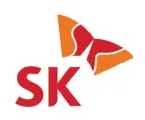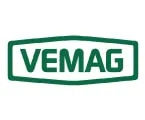Resources
About Us
Supply Chain Management Market in Manufacturing By Component (Solutions {Software and Hardware & Automation}, Services), and End User (Automotive, Electronics and Semiconductor, Pharmaceuticals) - Global Forecast to 2032
Report ID: MRSE - 1041468 Pages: 276 Apr-2025 Formats*: PDF Category: Semiconductor and Electronics Delivery: 2 to 4 Hours Download Free Sample ReportThe supply chain management market in manufacturing was valued at $23.7 billion in 2024. This market is expected to reach $52.4 billion by 2032 from an estimated $26.2 billion in 2025, at a CAGR of 10.4% during the forecast period from 2025 to 2032.
Key drivers of this market include the increasing adoption of digital technologies such as AI, IoT, blockchain, and cloud-based SCM software, which enable real-time tracking, predictive analytics, and automation. The rise of globalization, just-in-time manufacturing, and omnichannel distribution has further amplified the need for robust SCM solutions. Additionally, disruptions caused by geopolitical tensions, pandemics, and climate change have pushed manufacturers to invest in risk mitigation strategies and sustainable supply chain practices.
With the growing emphasis on Industry 4.0, circular supply chains, and supplier collaboration, the SCM market in manufacturing is expected to expand significantly, driven by the need for agility, transparency, and cost optimization in an increasingly complex global trade environment.
The growing sophistication of global supply chains is essentially redefining the manufacturing supply chain management (SCM) market, driving a pivot toward more dynamic, technology-enabled, and strategically integrated ecosystems. As Deloitte's Global Supply Chain Outlook indicates, businesses are confronted with unprecedented interconnectivity and volatility, rendering linear supply chain models of the past irrelevant. Instead, manufacturers are moving toward multidimensional ecosystems that stretch across numerous geographies, regulatory landscapes, and technology platforms. As Gartner Research points out, this change demands that businesses rethink their supply chain management strategy, abandoning static, sequential processes in favor of dynamic, adaptive networks that can predict disruptions and react in real time.
This complexity is fueled by a number of converging forces, including geopolitical tensions, shifting trade policies, increasing customer expectations, and accelerating developments in digital technologies like artificial intelligence (AI), blockchain, and the Internet of Things (IoT). The increasing need for customization, shorter delivery cycles, and compliance with sustainability is making supply chain operations even more difficult, forcing manufacturers to incorporate predictive analytics and automation within their supply chain planning. The strategic significance of this is deep in nature, where in addition to improving visibility within their networks, companies are now required to create resilience through collaborative relationships and sophisticated risk mitigation strategies. As supply chains become integrated digital ecosystems, those manufacturers that invest in smart, data-driven supply chain solutions will enjoy a substantial competitive edge. The capacity to dynamically reconfigure operations, optimize stock, and preemptively respond to disruptions will decide long-term success in an ever increasingly volatile global marketplace. Business, therefore, needs to become focused on end-to-end visibility, data-based decision-making, and real-time responsiveness to stay agile and responsive in a day of greater complexity.
Digital transformation is changing the way that manufacturing supply chain management is conceived, operated, and optimized within organizations. With the convergence of cutting-edge technologies like Artificial Intelligence (AI), the Internet of Things (IoT), next-generation analytics, and cloud computing, intelligent and self-optimizing supply chain ecosystems are evolving. These new technologies facilitate the capture of data in real time, predictive insights, and AI-driven decision-making, which enhance efficiency, drive down costs, and increase the overall resilience of the supply chain.
Digitally advanced supply chains can, as per Accenture, bring in 2.3 times more revenue and 3.5 times greater operational efficiency compared to their less-digitized peers. This substantial benefit is derived from the capability to predict demand shifts, manage inventory more efficiently, and foster greater collaboration throughout the supply chain network. Cloud-based platforms also enable easy integration among suppliers, manufacturers, and distributors, with greater visibility and responsiveness to market shifts.
The move to digital supply chains is no longer necessary but a strategic imperative in the face of rising complexity and global competition. Organizations that adopt digital transformation are more likely to ride through disruptions, deliver on customer demands for speed and customization, and sustain long-term profitability. As the manufacturing industry continues to change, organizations that do not invest in digital supply chain solutions risk losing their competitive advantage in an ever-changing marketplace
The integration of AI and machine learning is revolutionizing supply chain management by introducing unprecedented levels of intelligence and adaptability. These technologies enable predictive analytics that significantly improve demand forecasting accuracy by 30-50%, allowing manufacturers to optimize inventory levels and reduce costs. AI systems provide real-time visibility across supply chains by analyzing data from IoT sensors, market trends, and geopolitical factors to anticipate and mitigate potential disruptions. In operations, machine learning facilitates predictive maintenance by identifying equipment issues before they cause downtime, while AI-driven robotics and smart warehouse systems enhance logistics efficiency through optimized storage and automated material handling. The technology also transforms transportation management with dynamic route optimization that balances delivery speed, cost, and sustainability.
Beyond operational improvements, AI is reshaping strategic aspects of supply chain management. It enables sophisticated supplier relationship management through automated contract analysis and real-time vendor performance monitoring, ensuring continuity during disruptions. Perhaps most transformative is AI's ability to facilitate mass customization, dynamically adjusting production and supply chain configurations to meet shifting consumer demands without sacrificing efficiency. However, realizing these benefits requires substantial investments in data infrastructure, workforce training, and governance frameworks to address ethical and privacy concerns. As leading manufacturers demonstrate, from Siemens' smart factories to Tesla's autonomous systems, AI-powered supply chains represent the future - capable of continuous self-optimization and proactive adaptation to complex global challenges. This evolution positions AI not just as a tool for incremental gains, but as the foundation for building resilient, customer-centric supply chain ecosystems.
Based on component, the supply chain management market in manufacturing is segmented into solutions and services. In 2025, the solutions segment is expected to account for the largest share of 67.9% of the global supply chain management market in manufacturing. The large share of this segment is mainly attributed to the increasing need for supply chain resilience and risk management, the rising complexity of global supply networks, the growing demand for real-time visibility and analytics, and pressure to reduce operational costs while improving service levels and regulatory compliance requirements across different markets. Manufacturers increasingly rely on advanced SCM software (ERP, WMS, TMS, demand planning tools) to optimize inventory, reduce costs, and enhance coordination with suppliers. The shift toward Industry 4.0 enabled by IoT sensors, AI-driven analytics, and cloud platforms—further accelerates adoption. Additionally, hardware (RFID, automated guided vehicles, robotics) plays a critical role in warehouse automation and tracking, reducing manual errors.
Moreover, this segment is also poised to record a higher CAGR of 10.7% during the forecast period of 2025–2032.
Based on type, the supply chain management solutions market in manufacturing is segmented into software and hardware& automation. The software segment dominates market, due to its critical role in enabling end-to-end supply chain visibility, predictive analytics, and real-time decision-making. Manufacturers rely heavily on software solutions such as enterprise resource planning (ERP), transportation management systems (TMS), warehouse management systems (WMS), and artificial intelligence (AI)-driven analytics to optimize supply chain efficiency. The shift towards cloud-based platforms, the increasing integration of AI and machine learning, and the demand for digital twin technologies further drive software adoption. Additionally, software solutions require lower initial investment compared to hardware, making them more accessible across different manufacturing scales.
However, the hardware & automation segment is experiencing the fastest growth, driven by the rising demand for robotics, IoT-enabled devices, and automated material handling systems. As manufacturers seek to improve operational efficiency, reduce labor dependency, and enhance precision in supply chain processes, investments in automation technologies like autonomous mobile robots (AMRs), automated guided vehicles (AGVs), and AI-powered robotics are accelerating. The rapid expansion of smart factories, Industry 4.0 initiatives, and the integration of real-time sensor-based tracking solutions are fueling this segment's growth.
Based on end user, the supply chain management market in manufacturing is segmented into automotive, electronics and semiconductor, industrial machinery, pharmaceuticals, chemicals, aerospace and defense, food and beverage, oil and gas, and others (agriculture, medical devices, construction). In 2025, the automotive segment is expected to account for the largest share of 20.7% of the supply chain management market in manufacturing. The segment’s large share is mainly due to its complex, globalized, and highly interdependent supply chains. Automotive manufacturing involves thousands of components sourced from multiple tiers of suppliers, requiring precision in just-in-time (JIT) production, inventory management, and logistics coordination. The sector’s reliance on lean manufacturing principles, coupled with stringent quality and compliance standards (such as IATF 16949), necessitates advanced SCM solutions for demand forecasting, supplier collaboration, and risk mitigation. Additionally, the shift toward electric vehicles (EVs) and connected cars has further accelerated digital SCM adoption, including AI-driven logistics, IoT-enabled tracking, and blockchain for part authenticity.
However, the electronics and semiconductor segment is projected to register the highest CAGR during the forecast period of 2025–2032. The high growth of this segment is mainly attributed to its globally dispersed production, compressed product lifecycles, and vulnerability to disruptions. The 2020-2023 chip shortage exposed supply chain fragilities, driving investments in predictive analytics, diversified sourcing, and inventory buffers. The industry's need for precision logistics—given components' high value and environmental sensitivity—is accelerating IoT-based monitoring, blockchain authentication, and AI-driven quality control.
Based on geography, the global supply chain management market in manufacturing is segmented into North America, Europe, Asia-Pacific, Latin America, and the Middle East & Africa. In 2025, Asia-Pacific is expected to account for the largest share of 37.2% of the global supply chain management market in manufacturing. Moreover, the Asia-Pacific region is also projected to register the highest CAGR during the forecast period of 2025–2032.
The large share of this region is mainly attributed to a confluence of strategic advantages and economic factors. At the heart of this dominance lies the region's extensive manufacturing infrastructure, particularly in countries like China, Japan, South Korea, and increasingly India, which have developed robust industrial ecosystems that support complex and efficient supply chains. These nations have invested heavily in technological infrastructure, advanced manufacturing capabilities, and skilled workforce development, creating a highly competitive environment that attracts global manufacturers.
Lower labor costs, progressive economic policies, and substantial investments in manufacturing ecosystems have transformed these nations into global production hubs. Cutting-edge technologies such as AI and IoT enable highly efficient supply chain operations, while the region's massive and growing consumer markets provide additional economic momentum. These factors collectively create a dynamic, competitive environment that attracts multinational corporations and drives continuous innovation in manufacturing supply chains.
Major companies in the global supply chain management market in manufacturing have implemented various strategies to expand their product offerings footprints and augment their market shares. The key strategies followed by most companies in the supply chain management market in manufacturing were product launches, mergers & acquisitions, agreements, collaborations, and partnerships. Product launches accounted for a major share of the total strategic developments from key players between 2022 and 2025 followed by partnerships, agreements, and collaborations, and mergers & acquisitions.
Some of the prominent players that adopted these growth strategies are SAP SE (Germany), Oracle Corporation (U.S.), Blue Yonder Group, Inc. (formerly JDA Software) (U.S.), Manhattan Associates Inc. (U.S.), Siemens AG (Germany), Kinaxis Inc. (Canada), IBM (U.S.), Logility Supply Chain Solutions, Inc. (U.S.), Coupa Software Inc. (U.S.), Honeywell International Inc. (U.S.), Zebra Technologies Corporation (U.S.), Dematic (KION Group) (U.S.), Dassault Systèmes SE (France), and Körber AG (Germany).
|
Particulars |
Details |
|
Number of Pages |
265 |
|
Format |
|
|
Forecast Period |
2025–2032 |
|
Base Year |
2024 |
|
CAGR (Value) |
10.4% |
|
Market Size (Value)in 2025 |
USD 26.2 Billion |
|
Market Size (Value) in 2032 |
USD 52.4 Billion |
|
Segments Covered |
By Component
By End User
|
|
Countries Covered |
North America (U.S., Canada), Europe (Germany, France, U.K., Italy, Spain, and Rest of Europe), Asia-Pacific (China, India, Japan, South Korea, Australia, and Rest of Asia-Pacific), Latin America (Brazil, Mexico, Argentina, and Rest of Latin America), and the Middle East & Africa (Saudi Arabia, South Africa, UAE) |
|
Key Companies |
SAP SE (Germany), Oracle Corporation (U.S.), Blue Yonder Group, Inc. (formerly JDA Software) (U.S.), Manhattan Associates Inc. (U.S.), Siemens AG (Germany), Kinaxis Inc. (Canada), IBM (U.S.), Logility Supply Chain Solutions, Inc. (U.S.), Coupa Software Inc. (U.S.), Honeywell International Inc. (U.S.), Zebra Technologies Corporation (U.S.), Dematic (KION Group) (U.S.), Dassault Systèmes SE (France), and Körber AG (Germany). |
The global supply chain management market in manufacturing size was valued at $23.7 billion in 2024.
The market is projected to grow from $26.2 billion in 2025 to $52.4 billion by 2032.
The supply chain management market in manufacturing analysis indicates substantial growth, with projections indicating that the market will reach $52.4 billion by 2032, at a compound annual growth rate (CAGR) of 10.4% from 2025 to 2032.
The key companies operating in this market include SAP SE (Germany), Oracle Corporation (U.S.), Blue Yonder Group, Inc. (formerly JDA Software) (U.S.), Manhattan Associates Inc. (U.S.), Siemens AG (Germany), Kinaxis Inc. (Canada), IBM (U.S.), Logility Supply Chain Solutions, Inc. (U.S.), Coupa Software Inc. (U.S.), Honeywell International Inc. (U.S.), Zebra Technologies Corporation (U.S.), Dematic (KION Group) (U.S.), Dassault Systèmes SE (France), and Körber AG (Germany).
Integration of AI and machine learning and blockchain for supply chain transparency are prominent trends in the supply chain management market in manufacturing .
By component, the solutions segment is forecasted to hold the largest market share during 2025-2032
By end user, the automotive segment is expected to dominate the market during 2025-2032
By geography, Asia Pacific is expected to hold the largest share of the market during 2025-2032.
By region, the Asia-Pacific region is expected to hold the largest share of the supply chain management market in manufacturing in 2025. The large share of this region is mainly attributed to a confluence of strategic advantages and economic factors. At the heart of this dominance lies the region's extensive manufacturing infrastructure, particularly in countries like China, Japan, South Korea, and increasingly India, which have developed robust industrial ecosystems that support complex and efficient supply chains.
Key drivers of this market include the increasing adoption of digital technologies such as AI, IoT, blockchain, and cloud-based SCM software, which enable real-time tracking, predictive analytics, and automation. The rise of globalization, just-in-time manufacturing, and omnichannel distribution has further amplified the need for robust SCM solutions.
1. Introduction
1.1. Market Definition & Scope
1.2. Currency & Limitations
1.2.1. Currency
1.2.2. Limitations
2. Research Methodology
2.1. Research Approach
2.2. Data Collection & Validation Process
2.2.1. Secondary Research
2.2.2. Primary Research/Interviews with Key Opinion Leaders of the industry
2.3. Market Sizing and Forecasting
2.3.1. Market Size Estimation Approach
2.3.2. Growth Forecast Approach
2.4. Assumptions for the Study
3. Executive Summary
3.1. Overview
3.2. Segmental Analysis
3.2.1. Market Analysis, by Component
3.2.2. Market Analysis, by End User
3.3. Regional Analysis
3.4. Competitive Analysis
4. Market Insights
4.1. Introduction
4.2. Market Dynamics
4.2.1. Global SCM Market in Manufacturing: Impact Analysis of Market Drivers (2025–2032)
4.2.1.1. Increasing Complexity of Global Supply Chains
4.2.1.2. Digital Transformation in Manufacturing
4.2.1.3. Rising Adoption of Industry 4.0 Technologies
4.2.2. Global SCM Market in Manufacturing: Impact Analysis of Market Restraints (2025–2032)
4.2.2.1. High Implementation and Integration Costs
4.2.2.2. Data Security and Privacy Concerns
4.2.2.3. Skilled Workforce Shortage
4.2.3. Global SCM Market in Manufacturing: Impact Analysis of Market Opportunities (2025–2032)
4.2.3.1. Integration of AI and Machine Learning
4.2.3.2. Blockchain for Supply Chain Transparency
4.2.4. Global SCM Market in Manufacturing: Impact Analysis of Trends
4.2.4.1. Market Trends
4.2.4.1.1. Supply Chain Autonomy
4.2.4.1.2. Hyperautomation in Supply Chain
4.2.4.1.3. Circular Supply Chain Models
4.2.4.1.4. ESG Integration in Supply Chain
4.2.4.1.5. Quantum Computing Applications
4.3. Impact of Sustainability on the Supply Chain Management Market in Manufacturing
4.3.1. Introduction
4.3.2. Regulatory Landscape and Policy Frameworks
4.3.2.1. Global Emissions Regulations and Carbon Pricing Mechanisms
4.3.2.2. Extended Producer Responsibility and Circular Economy Legislation
4.3.2.3. Mandatory Supply Chain Due Diligence and Transparency Requirements
4.3.3. Market Trends and Consumer Demands
4.3.3.1. Evolution of Customer Preferences for Sustainable Products and Processes
4.3.3.2. Investor Pressure and ESG Integration in Supply Chain Strategy
4.3.3.3. Emergence of Industry Coalitions and Collaborative Platforms
4.3.4. Technological Innovations Enabling Sustainable Supply Chains
4.3.4.1. Digital Supply Chain Technologies for Environmental Optimization
4.3.4.2. Sustainable Materials and Green Chemistry Innovations
4.3.4.3. Clean Energy and Transportation Systems in Supply Networks
4.3.5. Strategic Approaches to Sustainable Supply Chain Management
4.3.5.1. Supply Chain Design and Network Optimization for Sustainability
4.3.5.2. Supplier Engagement and Development Programs
4.3.5.3. Circular Supply CHAIN Models and Closed-loop Systems
4.3.6. Implementation Challenges and Success Factors
4.3.6.1. Data Visibility and Management Challenges
4.3.6.2. Economic Considerations and ROI Challenges
4.3.6.3. Organizational and Cultural Transformation Requirements
4.3.7. Emerging Technologies and Innovation Frontiers
4.3.8. Strategic Implications for Industry Stakeholders
4.3.9. Conclusion
4.4. Porter’s Five Forces Analysis
4.4.1. Threat of New Entrants
4.4.2. Threat of Substitutes
4.4.3. Bargaining Power of Buyers
4.4.4. Bargaining Power of Suppliers
4.4.5. Degree of Competition
5. Supply Chain Management Market in Manufacturing Assessment–by Component
5.1. Overview
5.2. Solutions
5.2.1. Software
5.2.1.1. Integrated Platforms (End to End SCM)
5.2.1.2. Supply Chain Planning Software
5.2.1.3. Transportation Management Systems (TMS)
5.2.1.4. Warehouse Management Systems (WMS)
5.2.1.5. Procurement Management
5.2.1.6. Order Management Systems
5.2.1.7. Supply Chain Analytics Software
5.2.1.8. Other Software Solutions
5.2.2. Hardware and Automation
5.2.2.1. RFID Systems and Tags
5.2.2.2. Barcode Scanners and Printers
5.2.2.3. IOT Devices and Sensors
5.2.2.4. GPS and Telematics Systems
5.2.2.5. Automated Guided Vehicles (AGVS)
5.2.2.6. Robotics and Drones
5.2.2.7. Other Hardware and Automation Solutions
5.3. Services
5.3.1. Implementation and Integration Services
5.3.2. Consulting Services
5.3.3. Training and Support
5.3.4. Managed Services
5.3.5. Maintenance and Upgrades
6. Supply Chain Management Market in Manufacturing Assessment–by End User
6.1. Overview
6.2. Automotive
6.3. Electronics and Semiconductor
6.4. Industrial Machinery
6.5. Pharmaceuticals
6.6. Chemicals
6.7. Aerospace and Defense
6.8. Food and Beverages
6.9. Oil and Gas
6.10. Others (Agriculture, Medical Devices, Construction)
7. Supply Chain Management Market in Manufacturing Assessment–by Geography
7.1. Overview
7.2. North America
7.2.1. U.S.
7.2.2. Canada
7.3. Europe
7.3.1. Germany
7.3.2. U.K.
7.3.3. France
7.3.4. Italy
7.3.5. Spain
7.3.6. Rest of Europe
7.4. Asia-Pacific
7.4.1. China
7.4.2. India
7.4.3. Japan
7.4.4. South Korea
7.4.5. Australia
7.4.6. Rest of Asia-Pacific
7.5. Latin America
7.5.1. Brazil
7.5.2. Mexico
7.5.3. Argentina
7.5.4. Rest of Latin America
7.6. Middle East & Africa
7.6.1. Saudi Arabia
7.6.2. UAE
7.6.3. South Africa
7.6.4. Rest of Middle East & Africa
8. Competition Analysis
8.1. Overview
8.2. Key Growth Strategies
8.3. Competitive Benchmarking
8.4. Competitive Dashboard
8.4.1. Industry Leaders
8.4.2. Market Differentiators
8.4.3. Vanguards
8.4.4. Emerging Companies
9. Company Profiles (Business Overview, Financial Overview, Product Portfolio, Strategic Developments)
9.1. SAP SE
9.2. Oracle Corporation
9.3. Blue Yonder Group, Inc. (formerly Jda Software)
9.4. Manhattan Associates Inc.
9.5. Infor Inc.
9.6. Siemens AG
9.7. Kinaxis Inc.
9.8. IBM
9.9. Logility Supply Chain Solutions, Inc. (formerly Known as American Software, Inc.)
9.10. Coupa Software Inc.
9.11. Honeywell International Inc.
9.12. Zebra Technologies Corporation
9.13. Dematic (Kion Group AG)
9.14. Dassault Systèmes SE
9.15. Körber AG
10. Appendix
10.1. Available Customization
10.2. Related Reports
List of Tables
Table 1 Currency Conversion Rate (2020-2024)
Table 2 Global Supply Chain Management Market in Manufacturing, by Component, 2023–2032 (USD Million)
Table 3 Global Solutions Market, by Type, 2023–2032 (USD Million)
Table 4 Global Solutions Market, by Country/Region, 2023–2032 (USD Million)
Table 5 Global Software Market, by Type, 2023–2032 (USD Million)
Table 6 Global Software Market, by Country/Region, 2023–2032 (USD Million)
Table 7 Global Integrates Platforms (End to End SCM) Market, by Country/ Region, 2023–2032 (USD Million)
Table 8 Global Supply Chain Planning Software Market, by Country/Region, 2023–2032 (USD Million)
Table 9 Global Transport Management Systems Market, by Country/Region, 2023–2032 (USD Million)
Table 10 Global Warehouse Management Systems Market, by Country/Region, 2023–2032 (USD Million)
Table 11 Global Procurement Management Market, by Country/Region, 2023–2032 (USD Million)
Table 12 Global Order Management Systems Market, by Country/Region, 2023–2032 (USD Million)
Table 13 Global Supply Chain Analytics Software Market, by Country/Region, 2023–2032 (USD Million)
Table 14 Global Other Software Solutions Market, by Country/Region, 2023–2032 (USD Million)
Table 15 Global Hardware and Automation Market, by Type, 2023–2032 (USD Million)
Table 16 Global Hardware and Automation Market, by Country/Region, 2023–2032 (USD Million)
Table 17 Global RFID Systems and Tags Market, by Country/Region, 2023–2032 (USD Million)
Table 18 Global Barcode Scanners and Printers Market, by Country/Region, 2023–2032 (USD Million)
Table 19 Global IOT Devices and Sensors Market, by Country/Region, 2023–2032 (USD Million)
Table 20 Global GPS and Telematic Systems Market, by Country/Region, 2023–2032 (USD Million)
Table 21 Global Automated Guided Vehicles Market, by Country/Region, 2023–2032 (USD Million)
Table 22 Global Robotics and Drones Market, by Country/Region, 2023–2032 (USD Million)
Table 23 Global Other Hardware and Automation Solutions Market, by Country/ Region, 2023–2032 (USD Million)
Table 24 Global Services Market, by Type, 2023–2032 (USD Million)
Table 25 Global Services Market, by Country/Region, 2023–2032 (USD Million)
Table 26 Global Implementation and integration Services Market, by Country/ Region, 2023–2032 (USD Million)
Table 27 Global Consulting Services Market, by Country/Region, 2023–2032 (USD Million)
Table 28 Global Training and Support Services Market, by Country/Region, 2023–2032 (USD Million)
Table 29 Global Managed Services Market, by Country/Region, 2023–2032 (USD Million)
Table 30 Global Maintenance and Upgrade Services Market, by Country/Region, 2023–2032 (USD Million)
Table 31 Global Supply Chain Management Market in Manufacturing, by End User, 2023–2032 (USD Million)
Table 32 Global SCM Market in Manufacturing for Automotive, by Country/ Region, 2023–2032 (USD Million)
Table 33 Global SCM Market in Manufacturing for Electronics and Semiconductor, by Country/Region, 2023–2032 (USD Million)
Table 34 Global SCM Market in Manufacturing for Industrial Machinery, by Country/Region, 2023–2032 (USD Million)
Table 35 Global SCM Market in Manufacturing for Pharmaceuticals, by Country/ Region, 2023–2032 (USD Million)
Table 36 Global SCM Market in Manufacturing for Chemicals, by Country/Region, 2023–2032 (USD Million)
Table 37 Global SCM Market in Manufacturing for Aerospace and Defense, by Country/ Region, 2023–2032 (USD Million)
Table 38 Global SCM Market in Manufacturing for Food and Beverages, by Country/ Region, 2023–2032 (USD Million)
Table 39 Global SCM Market in Manufacturing for Oil and Gas, by Country/ Region, 2023–2032 (USD Million)
Table 40 Global SCM Market in Manufacturing for Other End Users, by Country/ Region, 2023–2032 (USD Million)
Table 41 Supply Chain Management Market in Manufacturing, by Country/Region, 2023–2032 (USD Million)
Table 42 North America: Supply Chain Management Market in Manufacturing, by Country, 2023–2032 (USD Million)
Table 43 North America: Supply Chain Management Market in Manufacturing, by Component, 2023–2032 (USD Million)
Table 44 North America: Solutions Market, by Type, 2023–2032 (USD Million)
Table 45 North America: Software Market, by Type, 2023–2032 (USD Million)
Table 46 North America: Hardware and Automation Market, by Type, 2023–2032 (USD Million)
Table 47 North America: Services Market, by Type, 2023–2032 (USD Million)
Table 48 North America: Supply Chain Management Market in Manufacturing, by End User, 2023–2032 (USD Million)
Table 49 U.S.: Supply Chain Management Market in Manufacturing, by Component, 2023–2032 (USD Million)
Table 50 U.S.: Solutions Market, by Type, 2023–2032 (USD Million)
Table 51 U.S.: Software Market, by Type, 2023–2032 (USD Million)
Table 52 U.S.: Hardware and Automation Market, by Type, 2023–2032 (USD Million)
Table 53 U.S.: Services Market, by Type, 2023–2032 (USD Million)
Table 54 U.S.: Supply Chain Management Market in Manufacturing, by End User, 2023–2032 (USD Million)
Table 55 Canada: Supply Chain Management Market in Manufacturing, by Component, 2023–2032 (USD Million)
Table 56 Canada: Solutions Market, by Type, 2023–2032 (USD Million)
Table 57 Canada: Software Market, by Type, 2023–2032 (USD Million)
Table 58 Canada: Hardware and Automation Market, by Type, 2023–2032 (USD Million)
Table 59 Canada: Services Market, by Type, 2023–2032 (USD Million)
Table 60 Canada: Supply Chain Management Market in Manufacturing, by End User, 2023–2032 (USD Million)
Table 61 Europe: Supply Chain Management Market in Manufacturing, by Country/ Region, 2023–2032 (USD Million)
Table 62 Europe: Supply Chain Management Market in Manufacturing, by Component, 2023–2032 (USD Million)
Table 63 Europe: Solutions Market, by Type, 2023–2032 (USD Million)
Table 64 Europe: Software Market, by Type, 2023–2032 (USD Million)
Table 65 Europe: Hardware and Automation Market, by Type, 2023–2032 (USD Million)
Table 66 Europe: Services Market, by Type, 2023–2032 (USD Million)
Table 67 Europe: Supply Chain Management Market in Manufacturing, by End User, 2023–2032 (USD Million)
Table 68 Germany: Supply Chain Management Market in Manufacturing, by Component, 2023–2032 (USD Million)
Table 69 Germany: Solutions Market, by Type, 2023–2032 (USD Million)
Table 70 Germany: Software Market, by Type, 2023–2032 (USD Million)
Table 71 Germany: Hardware and Automation Market, by Type, 2023–2032 (USD Million)
Table 72 Germany: Services Market, by Type, 2023–2032 (USD Million)
Table 73 Germany: Supply Chain Management Market in Manufacturing, by End User, 2023–2032 (USD Million)
Table 74 U.K.: Supply Chain Management Market in Manufacturing, by Component, 2023–2032 (USD Million)
Table 75 U.K.: Solutions Market, by Type, 2023–2032 (USD Million)
Table 76 U.K.: Software Market, by Type, 2023–2032 (USD Million)
Table 77 U.K.: Hardware and Automation Market, by Type, 2023–2032 (USD Million)
Table 78 U.K.: Services Market, by Type, 2023–2032 (USD Million)
Table 79 U.K.: Supply Chain Management Market in Manufacturing, by End User, 2023–2032 (USD Million)
Table 80 France: Supply Chain Management Market in Manufacturing, by Component, 2023–2032 (USD Million)
Table 81 France: Solutions Market, by Type, 2023–2032 (USD Million)
Table 82 France: Software Market, by Type, 2023–2032 (USD Million)
Table 83 France: Hardware and Automation Market, by Type, 2023–2032 (USD Million)
Table 84 France: Services Market, by Type, 2023–2032 (USD Million)
Table 85 France: Supply Chain Management Market in Manufacturing, by End User, 2023–2032 (USD Million)
Table 86 Italy: Supply Chain Management Market in Manufacturing, by Component, 2023–2032 (USD Million)
Table 87 Italy: Solutions Market, by Type, 2023–2032 (USD Million)
Table 88 Italy: Software Market, by Type, 2023–2032 (USD Million)
Table 89 Italy: Hardware and Automation Market, by Type, 2023–2032 (USD Million)
Table 90 Italy: Services Market, by Type, 2023–2032 (USD Million)
Table 91 Italy: Supply Chain Management Market in Manufacturing, by End User, 2023–2032 (USD Million)
Table 92 Spain: Supply Chain Management Market in Manufacturing, by Component, 2023–2032 (USD Million)
Table 93 Spain: Solutions Market, by Type, 2023–2032 (USD Million)
Table 94 Spain: Software Market, by Type, 2023–2032 (USD Million)
Table 95 Spain: Hardware and Automation Market, by Type, 2023–2032 (USD Million)
Table 96 Spain: Services Market, by Type, 2023–2032 (USD Million)
Table 97 Spain: Supply Chain Management Market in Manufacturing, by End User, 2023–2032 (USD Million)
Table 98 Rest of Europe: Supply Chain Management Market in Manufacturing, by Component, 2023–2032 (USD Million)
Table 99 Rest of Europe: Solutions Market, by Type, 2023–2032 (USD Million)
Table 100 Rest of Europe: Software Market, by Type, 2023–2032 (USD Million)
Table 101 Rest of Europe: Hardware and Automation Market, by Type, 2023–2032 (USD Million)
Table 102 Rest of Europe: Services Market, by Type, 2023–2032 (USD Million)
Table 103 Rest of Europe: Supply Chain Management Market in Manufacturing, by End User, 2023–2032 (USD Million)
Table 104 Asia-Pacific: Supply Chain Management Market in Manufacturing, by Country/ Region, 2023–2032 (USD Million)
Table 105 Asia-Pacific: Supply Chain Management Market in Manufacturing, by Component, 2023–2032 (USD Million)
Table 106 Asia-Pacific: Solutions Market, by Type, 2023–2032 (USD Million)
Table 107 Asia-Pacific: Software Market, by Type, 2023–2032 (USD Million)
Table 108 Asia-Pacific: Hardware and Automation Market, by Type, 2023–2032 (USD Million)
Table 109 Asia-Pacific: Services Market, by Type, 2023–2032 (USD Million)
Table 110 Asia-Pacific: Supply Chain Management Market in Manufacturing, by End User, 2023–2032 (USD Million)
Table 111 China: Supply Chain Management Market in Manufacturing, by Component, 2023–2032 (USD Million)
Table 112 China: Solutions Market, by Type, 2023–2032 (USD Million)
Table 113 China: Software Market, by Type, 2023–2032 (USD Million)
Table 114 China: Hardware and Automation Market, by Type, 2023–2032 (USD Million)
Table 115 China: Services Market, by Type, 2023–2032 (USD Million)
Table 116 China: Supply Chain Management Market in Manufacturing, by End User, 2023–2032 (USD Million)
Table 117 India: Supply Chain Management Market in Manufacturing, by Component, 2023–2032 (USD Million)
Table 118 India: Solutions Market, by Type, 2023–2032 (USD Million)
Table 119 India: Software Market, by Type, 2023–2032 (USD Million)
Table 120 India: Hardware and Automation Market, by Type, 2023–2032 (USD Million)
Table 121 India: Services Market, by Type, 2023–2032 (USD Million)
Table 122 India: Supply Chain Management Market in Manufacturing, by End User, 2023–2032 (USD Million)
Table 123 Japan: Supply Chain Management Market in Manufacturing, by Component, 2023–2032 (USD Million)
Table 124 Japan: Solutions Market, by Type, 2023–2032 (USD Million)
Table 125 Japan: Software Market, by Type, 2023–2032 (USD Million)
Table 126 Japan: Hardware and Automation Market, by Type, 2023–2032 (USD Million)
Table 127 Japan: Services Market, by Type, 2023–2032 (USD Million)
Table 128 Japan: Supply Chain Management Market in Manufacturing, by End User, 2023–2032 (USD Million)
Table 129 South Korea: Supply Chain Management Market in Manufacturing, by Component, 2023–2032 (USD Million)
Table 130 South Korea: Solutions Market, by Type, 2023–2032 (USD Million)
Table 131 South Korea: Software Market, by Type, 2023–2032 (USD Million)
Table 132 South Korea: Hardware and Automation Market, by Type, 2023–2032 (USD Million)
Table 133 South Korea: Services Market, by Type, 2023–2032 (USD Million)
Table 134 South Korea: Supply Chain Management Market in Manufacturing, by End User, 2023–2032 (USD Million)
Table 135 Australia: Supply Chain Management Market in Manufacturing, by Component, 2023–2032 (USD Million)
Table 136 Australia: Solutions Market, by Type, 2023–2032 (USD Million)
Table 137 Australia: Software Market, by Type, 2023–2032 (USD Million)
Table 138 Australia: Hardware and Automation Market, by Type, 2023–2032 (USD Million)
Table 139 Australia: Services Market, by Type, 2023–2032 (USD Million)
Table 140 Australia: Supply Chain Management Market in Manufacturing, by End User, 2023–2032 (USD Million)
Table 141 Rest of Asia-Pacific: Supply Chain Management Market in Manufacturing, by Component, 2023–2032 (USD Million)
Table 142 Rest of Asia-Pacific: Solutions Market, by Type, 2023–2032 (USD Million)
Table 143 Rest of Asia-Pacific: Software Market, by Type, 2023–2032 (USD Million)
Table 144 Rest of Asia-Pacific: Hardware and Automation Market, by Type, 2023–2032 (USD Million)
Table 145 Rest of Asia-Pacific: Services Market, by Type, 2023–2032 (USD Million)
Table 146 Rest of Asia-Pacific: Supply Chain Management Market in Manufacturing, by End User, 2023–2032 (USD Million)
Table 147 Latin America: Supply Chain Management Market in Manufacturing, by Country/ Region, 2023–2032 (USD Million)
Table 148 Latin America: Supply Chain Management Market in Manufacturing, by Component, 2023–2032 (USD Million)
Table 149 Latin America: Solutions Market, by Type, 2023–2032 (USD Million)
Table 150 Latin America: Software Market, by Type, 2023–2032 (USD Million)
Table 151 Latin America: Hardware and Automation Market, by Type, 2023–2032 (USD Million)
Table 152 Latin America: Services Market, by Type, 2023–2032 (USD Million)
Table 153 Latin America: Supply Chain Management Market in Manufacturing, by End User, 2023–2032 (USD Million)
Table 154 Brazil: Supply Chain Management Market in Manufacturing, by Component, 2023–2032 (USD Million)
Table 155 Brazil: Solutions Market, by Type, 2023–2032 (USD Million)
Table 156 Brazil: Software Market, by Type, 2023–2032 (USD Million)
Table 157 Brazil: Hardware and Automation Market, by Type, 2023–2032 (USD Million)
Table 158 Brazil: Services Market, by Type, 2023–2032 (USD Million)
Table 159 Brazil: Supply Chain Management Market in Manufacturing, by End User, 2023–2032 (USD Million)
Table 160 Mexico: Supply Chain Management Market in Manufacturing, by Component, 2023–2032 (USD Million)
Table 161 Mexico: Solutions Market, by Type, 2023–2032 (USD Million)
Table 162 Mexico: Software Market, by Type, 2023–2032 (USD Million)
Table 163 Mexico: Hardware and Automation Market, by Type, 2023–2032 (USD Million)
Table 164 Mexico: Services Market, by Type, 2023–2032 (USD Million)
Table 165 Mexico: Supply Chain Management Market in Manufacturing, by End User, 2023–2032 (USD Million)
Table 166 Argentina: Supply Chain Management Market in Manufacturing, by Component, 2023–2032 (USD Million)
Table 167 Argentina: Solutions Market, by Type, 2023–2032 (USD Million)
Table 168 Argentina: Software Market, by Type, 2023–2032 (USD Million)
Table 169 Argentina: Hardware and Automation Market, by Type, 2023–2032 (USD Million)
Table 170 Argentina: Services Market, by Type, 2023–2032 (USD Million)
Table 171 Argentina: Supply Chain Management Market in Manufacturing, by End User, 2023–2032 (USD Million)
Table 172 Rest of Latin America: Supply Chain Management Market in Manufacturing, by Component, 2023–2032 (USD Million)
Table 173 Rest of Latin America: Solutions Market, by Type, 2023–2032 (USD Million)
Table 174 Rest of Latin America: Software Market, by Type, 2023–2032 (USD Million)
Table 175 Rest of Latin America: Hardware and Automation Market, by Type, 2023–2032 (USD Million)
Table 176 Rest of Latin America: Services Market, by Type, 2023–2032 (USD Million)
Table 177 Rest of Latin America: Supply Chain Management Market in Manufacturing, by End User, 2023–2032 (USD Million)
Table 178 Middle East & Africa: Supply Chain Management Market in Manufacturing, by Country/Region, 2023–2032 (USD Million)
Table 179 Middle East & Africa: Supply Chain Management Market in Manufacturing, by Component, 2023–2032 (USD Million)
Table 180 Middle East & Africa: Solutions Market, by Type, 2023–2032 (USD Million)
Table 181 Middle East & Africa: Software Market, by Type, 2023–2032 (USD Million)
Table 182 Middle East & Africa: Hardware and Automation Market, by Type, 2023–2032 (USD Million)
Table 183 Middle East & Africa: Services Market, by Type, 2023–2032 (USD Million)
Table 184 Middle East & Africa: Supply Chain Management Market in Manufacturing, by End User, 2023–2032 (USD Million)
Table 185 Saudi Arabia: Supply Chain Management Market in Manufacturing, by Component, 2023–2032 (USD Million)
Table 186 Saudi Arabia: Solutions Market, by Type, 2023–2032 (USD Million)
Table 187 Saudi Arabia: Software Market, by Type, 2023–2032 (USD Million)
Table 188 Saudi Arabia: Hardware and Automation Market, by Type, 2023–2032 (USD Million)
Table 189 Saudi Arabia: Services Market, by Type, 2023–2032 (USD Million)
Table 190 Saudi Arabia: Supply Chain Management Market in Manufacturing, by End User, 2023–2032 (USD Million)
Table 191 UAE: Supply Chain Management Market in Manufacturing, by Component, 2023–2032 (USD Million)
Table 192 UAE: Solutions Market, by Type, 2023–2032 (USD Million)
Table 193 UAE: Software Market, by Type, 2023–2032 (USD Million)
Table 194 UAE: Hardware and Automation Market, by Type, 2023–2032 (USD Million)
Table 195 UAE: Services Market, by Type, 2023–2032 (USD Million)
Table 196 UAE: Supply Chain Management Market in Manufacturing, by End User, 2023–2032 (USD Million)
Table 197 South Africa: Supply Chain Management Market in Manufacturing, by Component, 2023–2032 (USD Million)
Table 198 South Africa: Solutions Market, by Type, 2023–2032 (USD Million)
Table 199 South Africa: Software Market, by Type, 2023–2032 (USD Million)
Table 200 South Africa: Hardware and Automation Market, by Type, 2023–2032 (USD Million)
Table 201 South Africa: Services Market, by Type, 2023–2032 (USD Million)
Table 202 South Africa: Supply Chain Management Market in Manufacturing, by End User, 2023–2032 (USD Million)
Table 203 Rest of Middle East & Africa: Supply Chain Management Market in Manufacturing, by Component, 2023–2032 (USD Million)
Table 204 Rest of Middle East & Africa: Solutions Market, by Type, 2023–2032 (USD Million)
Table 205 Rest of Middle East & Africa: Software Market, by Type, 2023–2032 (USD Million)
Table 206 Rest of Middle East & Africa: Hardware and Automation Market, by Type, 2023–2032 (USD Million)
Table 207 Rest of Middle East & Africa: Services Market, by Type, 2023–2032 (USD Million)
Table 208 Rest of Middle East & Africa: Supply Chain Management Market in Manufacturing, by End User, 2023–2032 (USD Million)
Table 209 Recent Developments, by Company (2022-2025)
List of Figures
Figure 1 Market Ecosystem
Figure 2 Key Stakeholders
Figure 3 Research Process
Figure 4 Key Secondary Sources
Figure 5 Primary Research Techniques
Figure 6 Key Executives interviewed
Figure 7 Breakdown of Primary interviews (Supply-Side & Demand-Side)
Figure 8 Market Sizing and Growth Forecast Approach
Figure 9 In 2025, the Solutions Segment Is Expected to Dominate the Global Supply Chain Management Market in Manufacturing
Figure 10 In 2025, the Automotive Segment Is Expected to Dominate the Global Supply Chain Management Market in Manufacturing
Figure 11 Global Supply Chain Management Market in Manufacturing, by Region (2025 Vs. 2032)
Figure 12 Porter's Five Forces Analysis
Figure 13 Global Supply Chain Management Market in Manufacturing, by Component, 2025 Vs. 2032 (USD Million)
Figure 14 Global Supply Chain Management Market in Manufacturing, by End User, 2025 Vs. 2032 (USD Million)
Figure 15 Supply Chain Management Market in Manufacturing, by Region, 2025 Vs. 2032 (USD Million)
Figure 16 North America: Supply Chain Management Market in Manufacturing Snapshot
Figure 17 Europe: Supply Chain Management Market in Manufacturing Snapshot
Figure 18 Asia-Pacific: Supply Chain Management Market in Manufacturing Snapshot
Figure 19 Latin America: Supply Chain Management Market in Manufacturing Snapshot
Figure 20 Middle East & Africa: Supply Chain Management Market in Manufacturing Snapshot
Figure 21 Key Growth Strategies Adopted by Leading Players (2022–2025)
Figure 22 Supply Chain Management Market in Manufacturing: Competitive Benchmarking, by Component
Figure 23 Competitive Dashboard: Supply Chain Management Market in Manufacturing
Figure 24 SAP SE: Financial Overview (2024)
Figure 25 Oracle Corporation: Financial Overview (2024)
Figure 26 Manhattan Associates Inc.: Financial Overview (2023)
Figure 27 Siemens AG: Financial Overview (2023)
Figure 28 Kinaxis Inc.: Financial Overview (2023)
Figure 29 IBM: Financial Overview (2024)
Figure 30 American Software, Inc.: Financial Overview (2024)
Figure 31 Honeywell International Inc.: Financial Overview (2024)
Figure 32 Zebra Technologies Corporation: Financial Overview (2024)
Figure 33 Kion Group AG: Financial Overview (2024)
Figure 34 Dassault Systèmes SE: Financial Overview (2023)
























Please enter your corporate email id here to view sample report.
Subscribe to get the latest industry updates